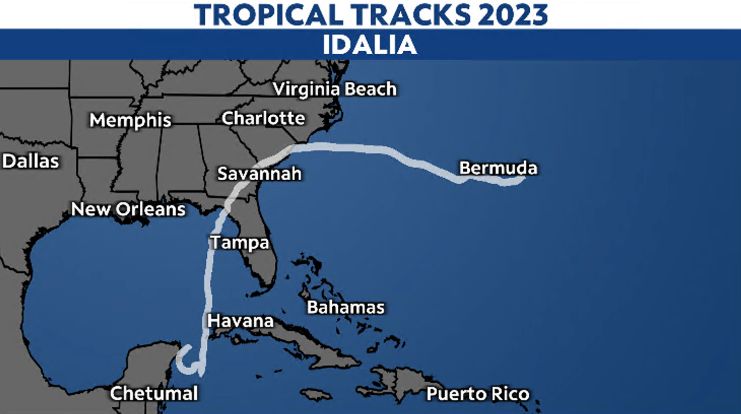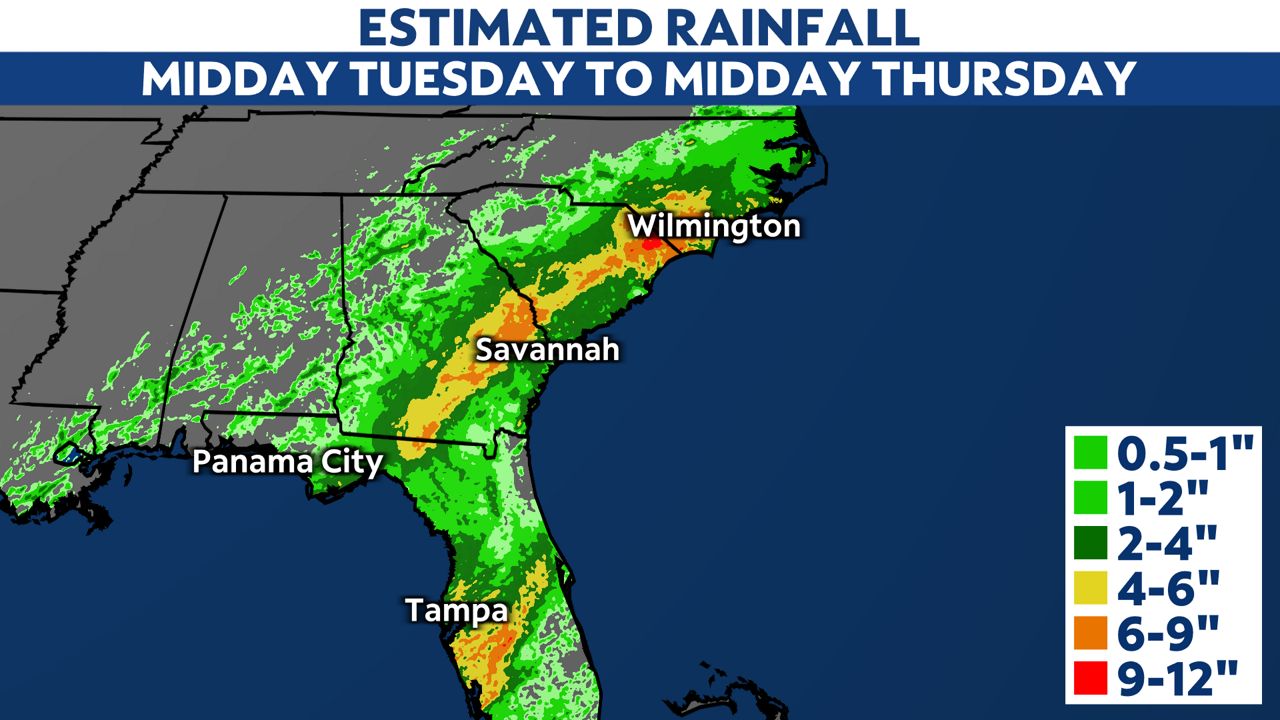Idalia was the second major hurricane to form during the 2023 Atlantic hurricane season, but was the first to make landfall on U.S. soil.
While it brought significant storm surge and damaging winds to Florida's Big Bend region, Idalia also impacted other parts of the Southeast with heavy rainfall, life-threatening flooding and some tornadoes.
Idalia first formed in the Caribbean Sea on Aug. 27 and stalled near the tip of the Yucatán Peninsula. It then moved north into the Gulf of Mexico, where it rapidly intensified to a Category 4 hurricane.
Idalia weakened slightly just before landfall, but struck as a major Category 3 hurricane near Keaton Beach, Fla. around 7:45 a.m. on Aug. 30, with top estimated wind speeds of 125 mph.

According to the National Weather Service in Tallahassee, no major hurricanes had tracked into Apalachee Bay since records began in 1851. A landfall there is unprecedented in modern times.
Idalia brought destructive storm surge and winds to parts of Florida's Gulf Coast, especially in the Big Bend region and northern reaches of the Nature Coast. Perry, Fla. reported an 85 mph wind gust, and Horseshoe Beach hit 81 mph. At one point, about a half-million customers in Florida and Georgia had no electricity.
The worst storm surge issues were on Florida's Gulf Coast, especially in the Big Bend region. Here is a time lapse from Steinhatchee, Fla. as Idalia made landfall on the morning of Aug. 30, 2023.
The water level at Cedar Key, about 50 miles from the landfall point, had a storm surge of nearly 7 feet. Homes in Horseshoe Beach, Fla. had water marks six feet up the walls, and one resident estimated at least 50 homes were destroyed.
Storm surge inundated parts of the Tampa Bay area. Water was at least a few feet deep in surge-prone parts of Pinellas County Tuesday, closing numerous roadways. You can see a gallery of damage photos from the Tampa region.
On the Atlantic coast, the high tide during the evening on Aug. 30 in Charleston, S.C. surpassed 9.2 feet, its fifth-highest reading since records began there in 1899.
Idalia also dropped heavy rain that caused inland flooding. Some locations in Florida, Georgia and the Carolinas got more than 9 inches of rainfall. Mullins, N.C. reported nearly a foot of rain Thursday morning. Floodwater entered buildings in downtown Whiteville, N.C.

Numerous Tornado Warnings were issued during the storms entirety, with at least of few tornadoes confirmed in the Carolinas.
The worst of the impacts began to subside on Aug. 31, as Idalia continued move farther east off the Carolina coast where it eventually became post-tropical. Although it continued to generate large swells and dangerous rip currents up the East Coast through most of the Labor Day weekend.
Idalia tracked toward Bermuda, bringing gusty winds and heavy rainfall to the island before swinging northward and heading toward the Canadian Maritimes.
Along with significant damages to both business and residential infrastructures, Idalia left hundreds of thousands without power across the Southeast. Officials reported at least one death in Georgia and another in Florida.
Check here for a look at the 2023 Atlantic hurricane season so far.
The Associated Press contributed to this story.
Our team of meteorologists dives deep into the science of weather and breaks down timely weather data and information. To view more weather and climate stories, check out our weather blogs section.



